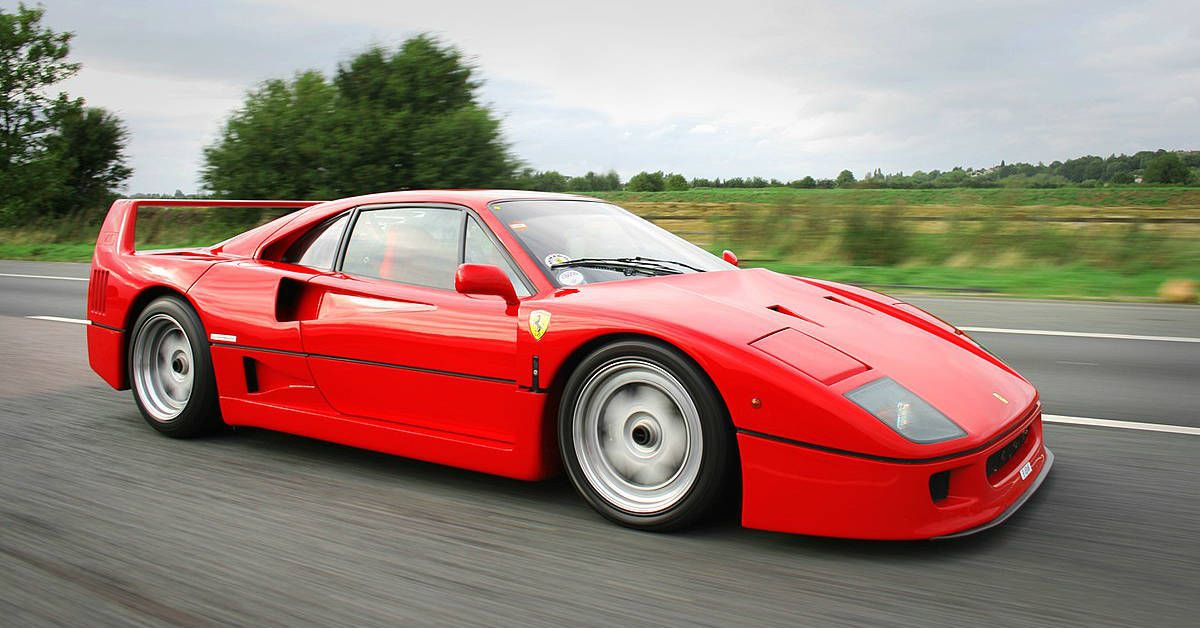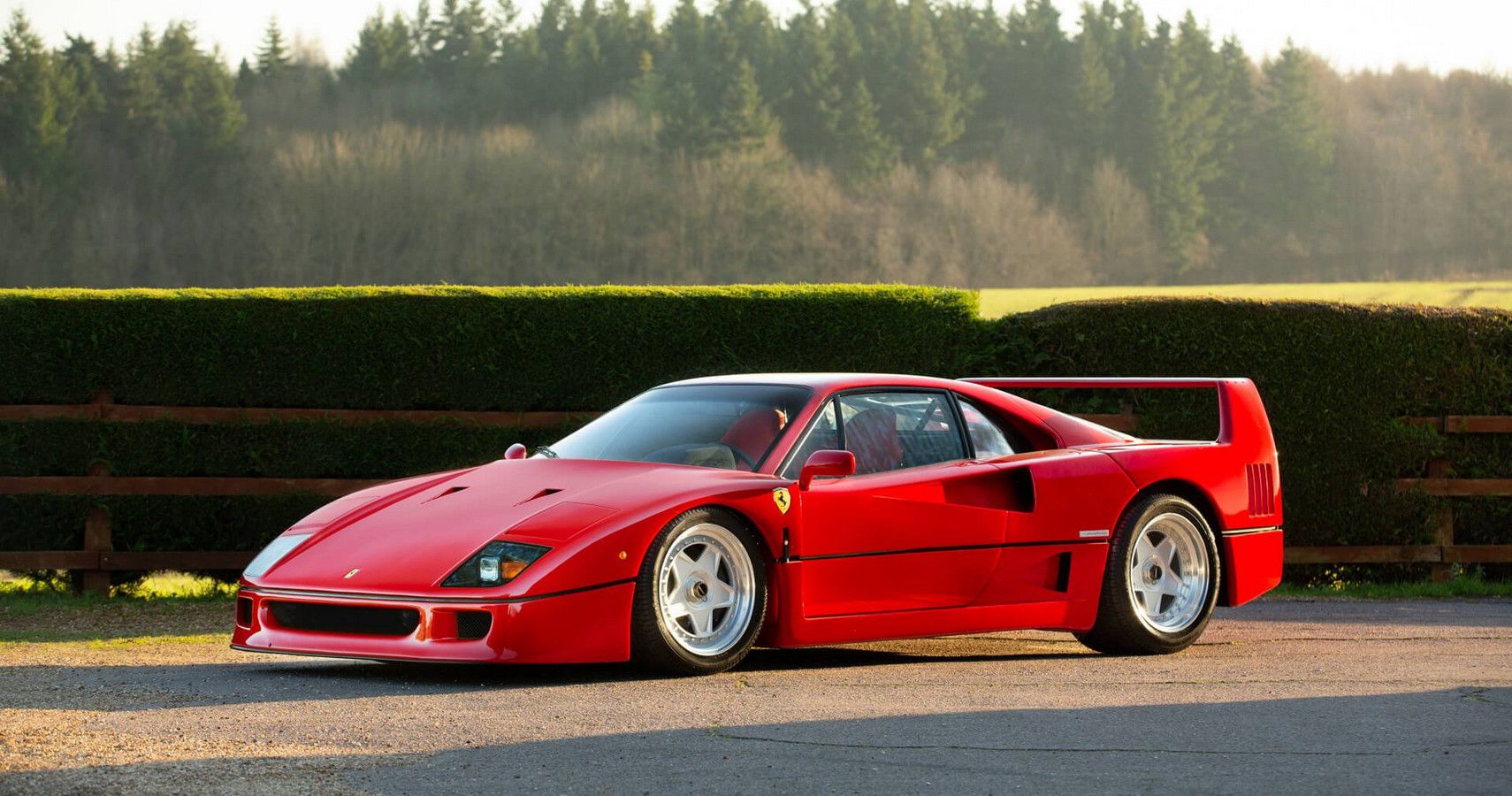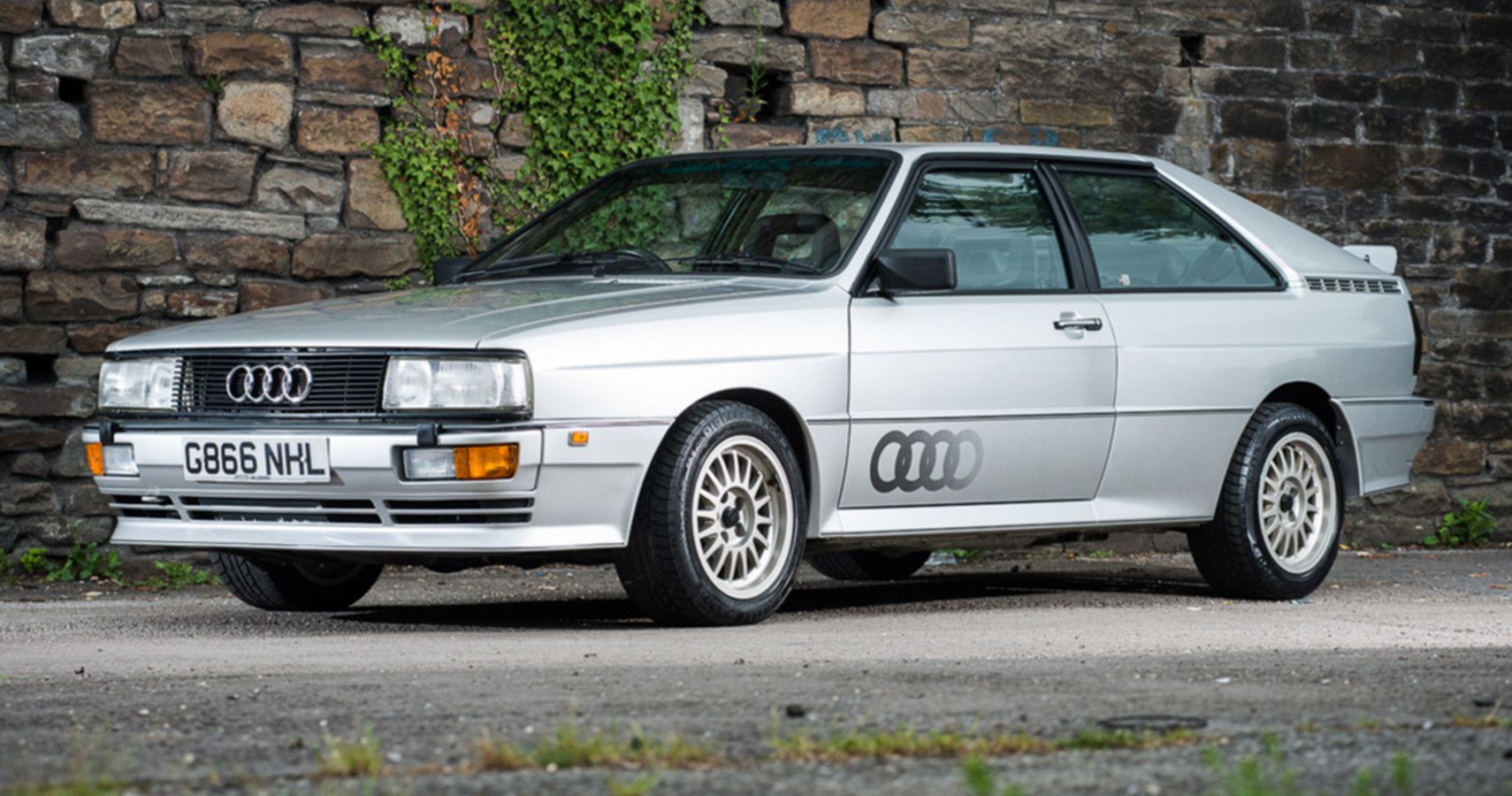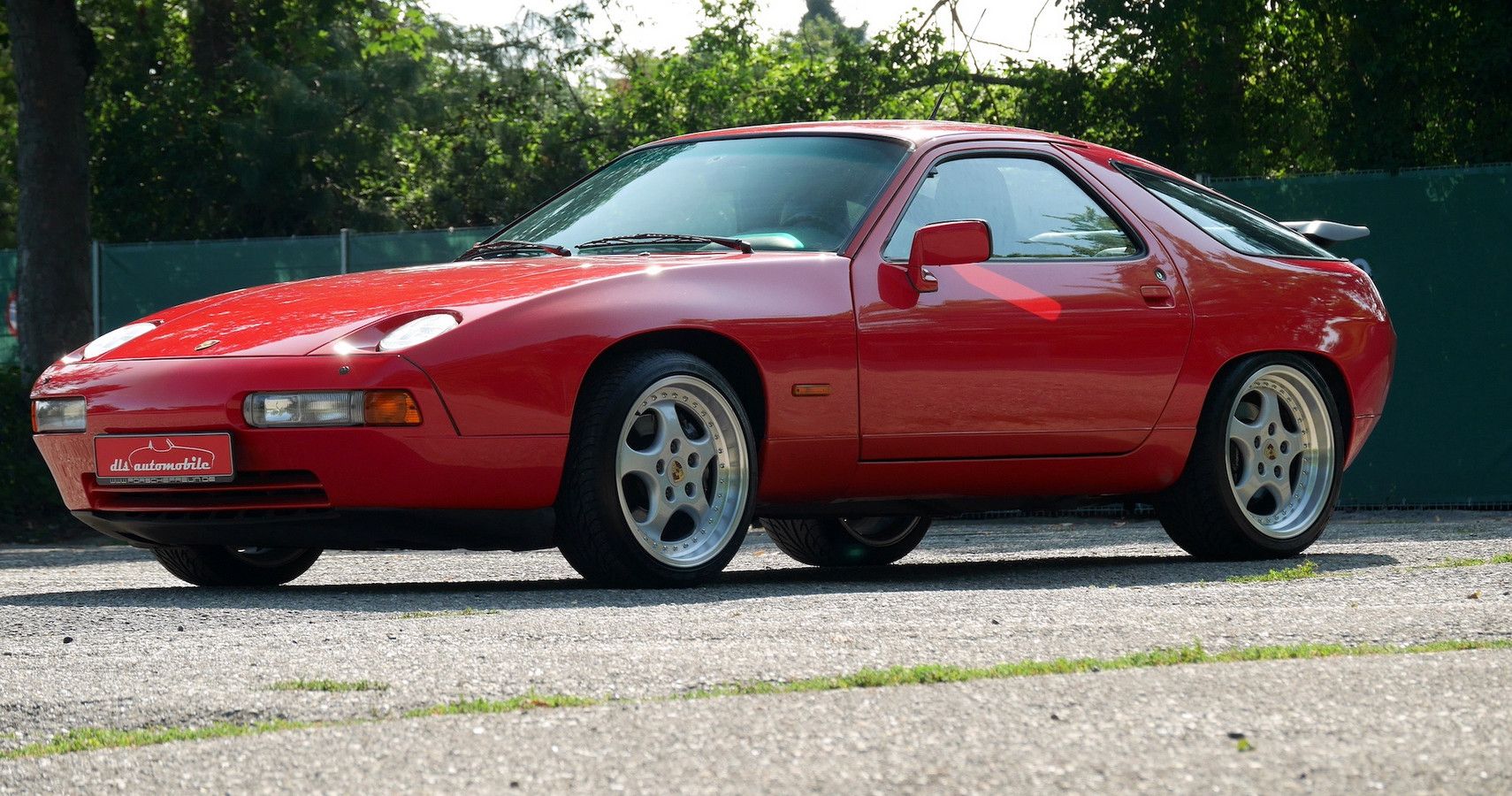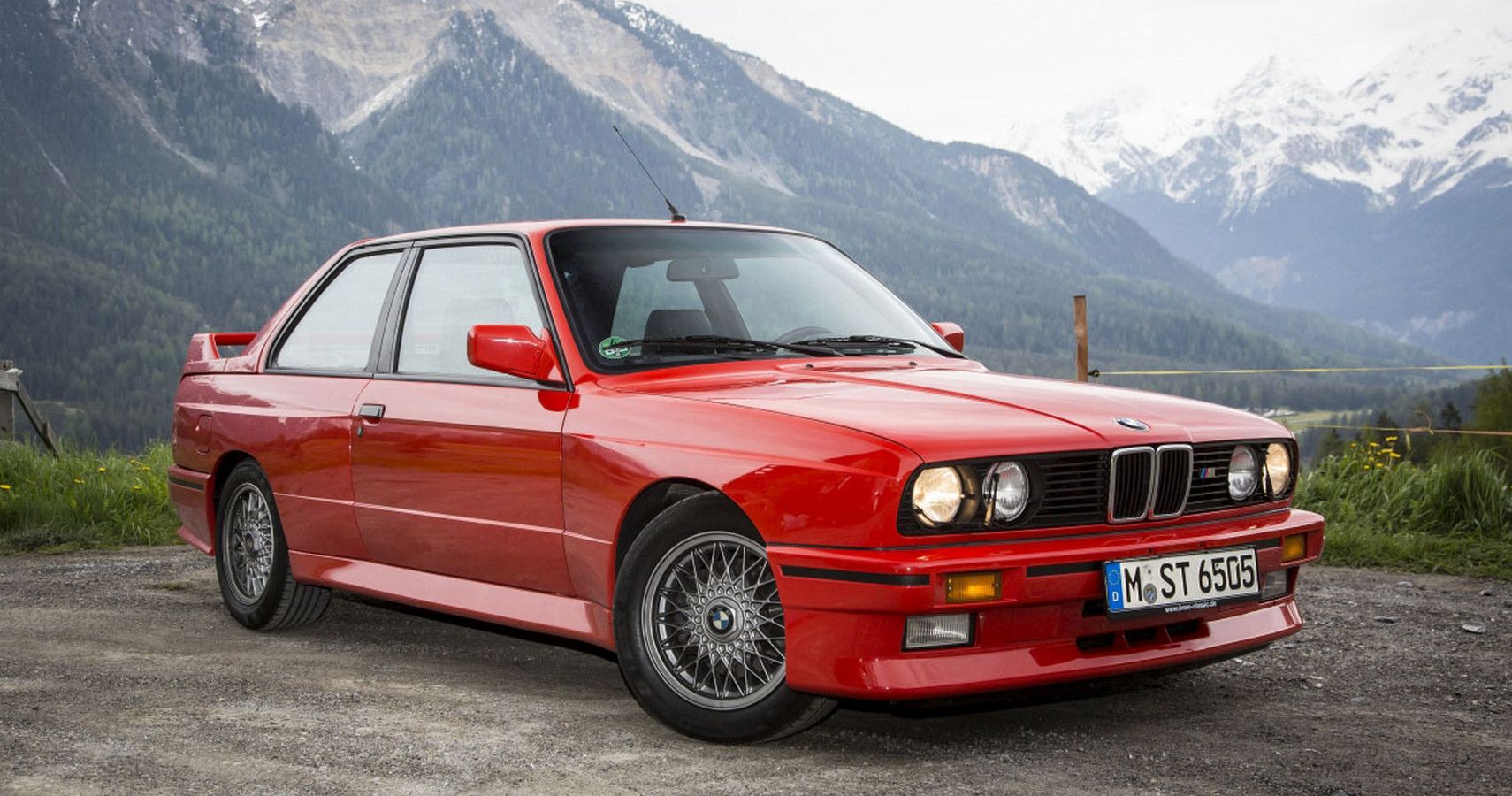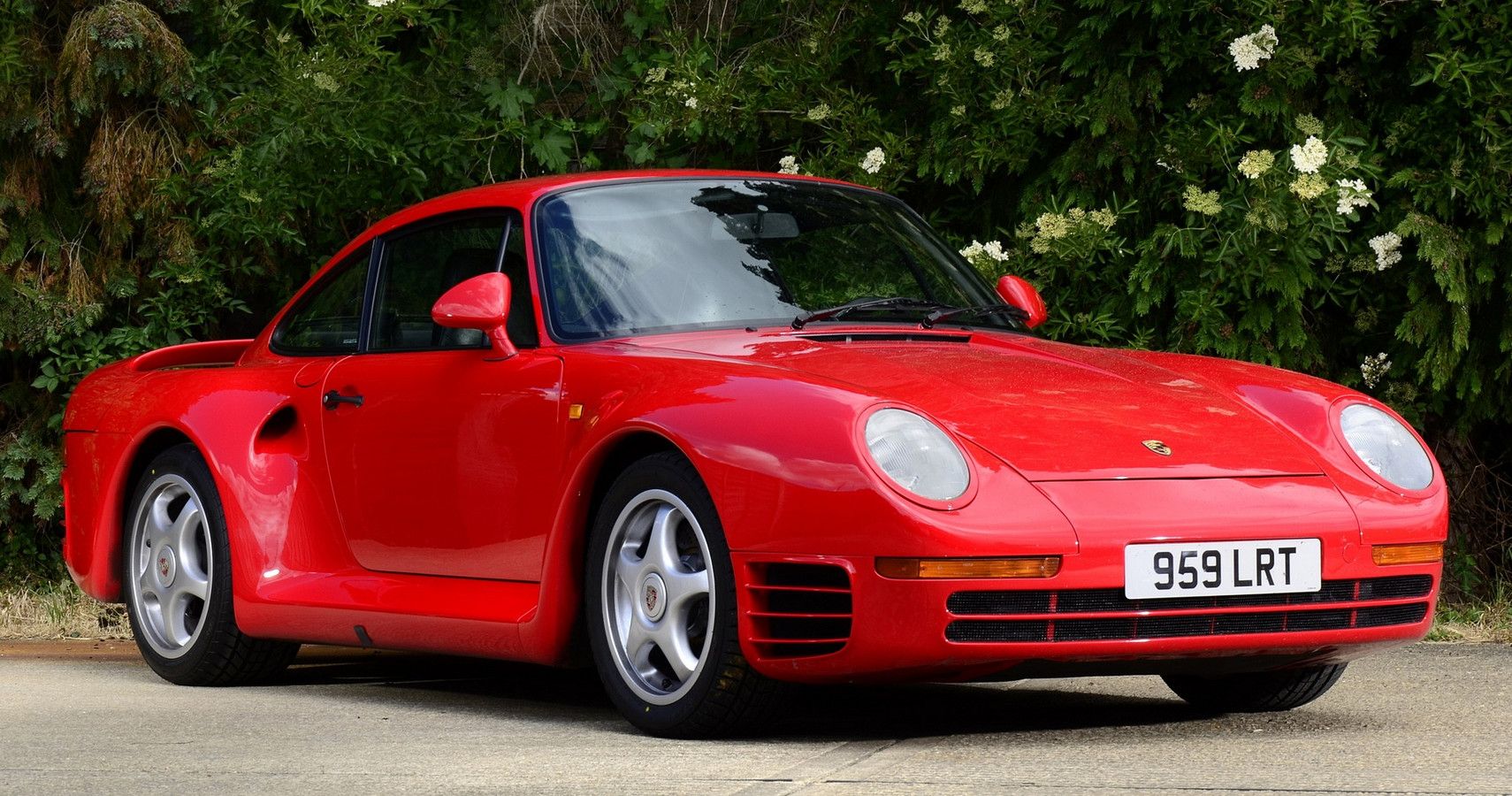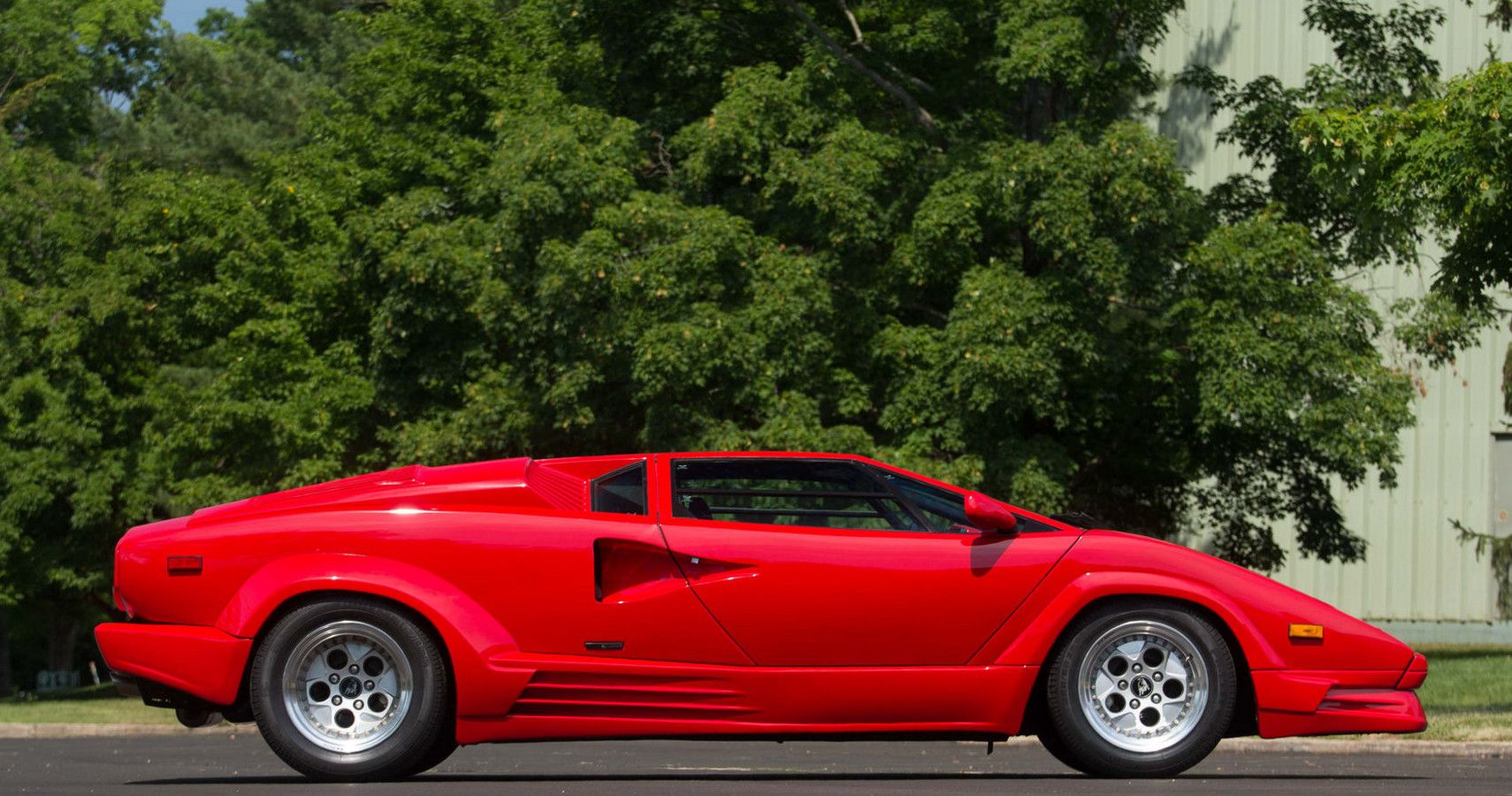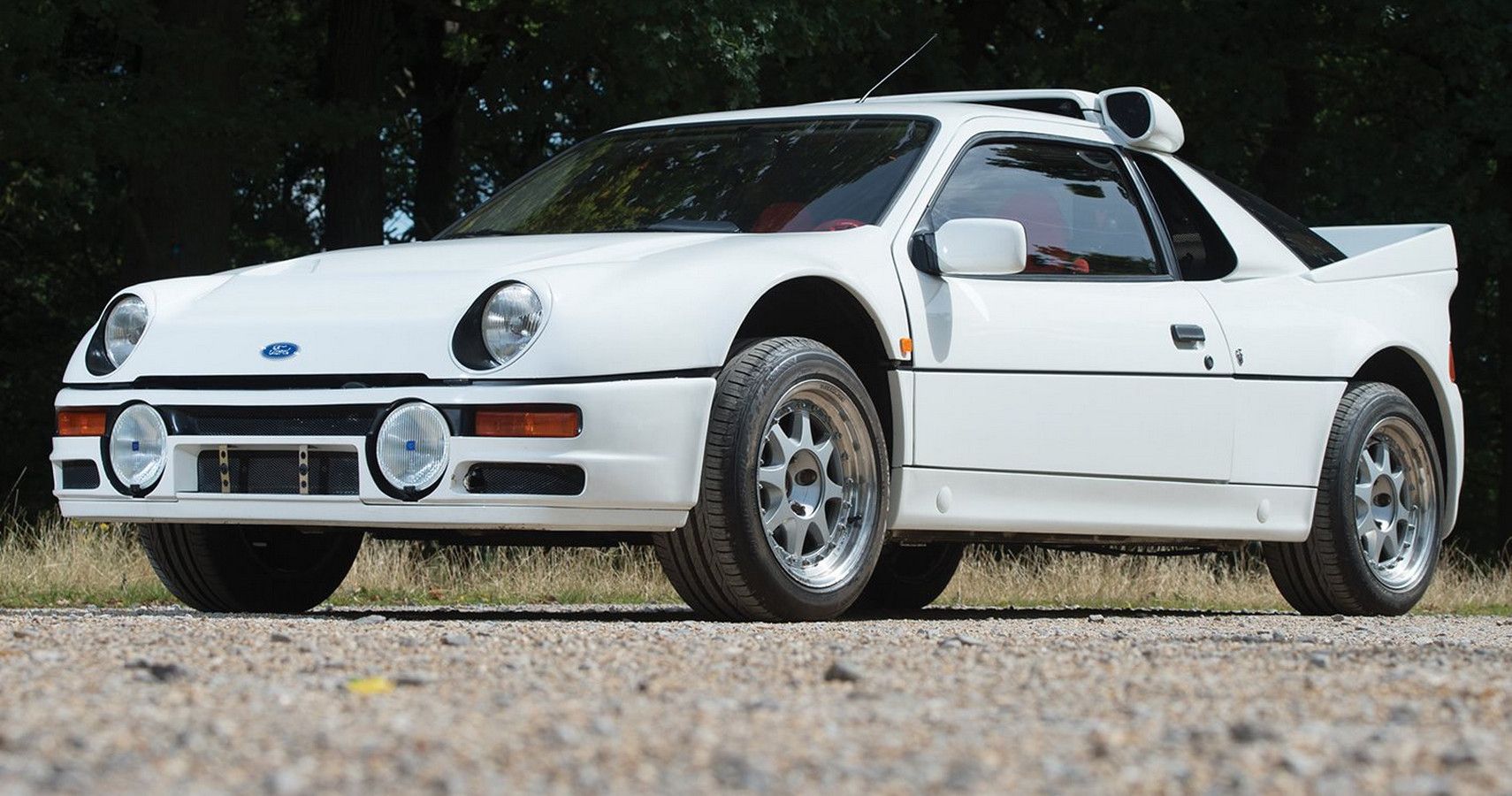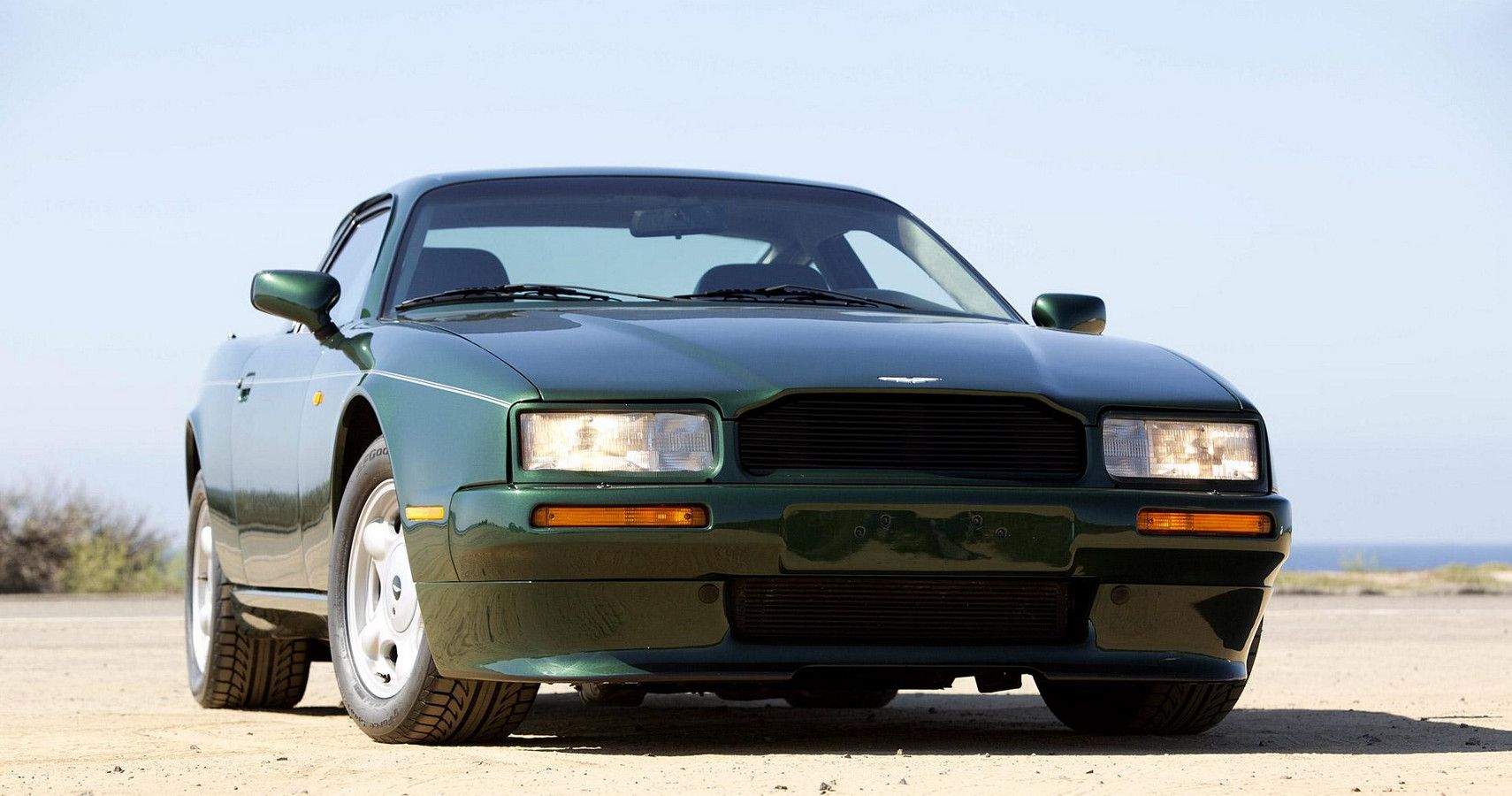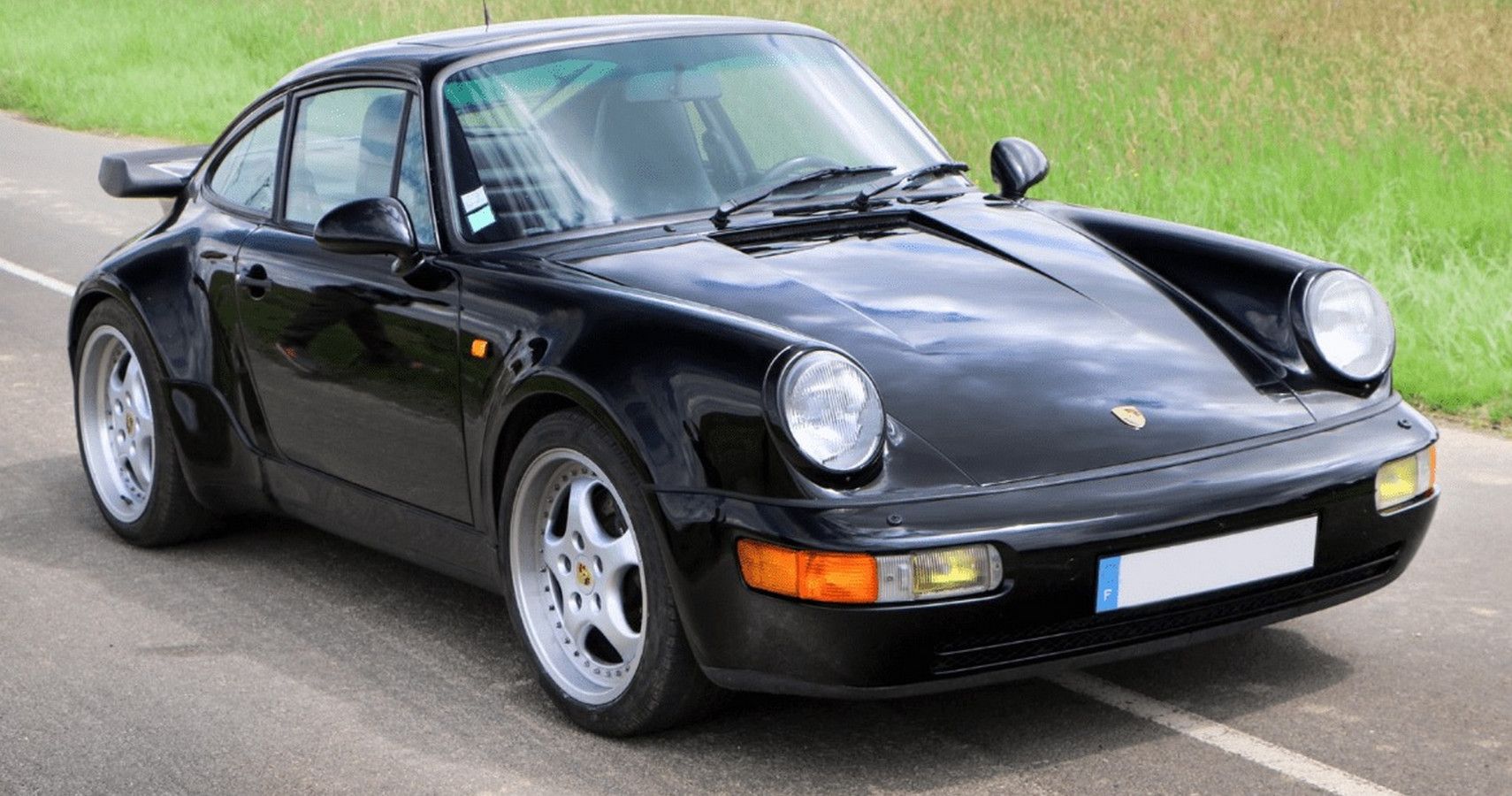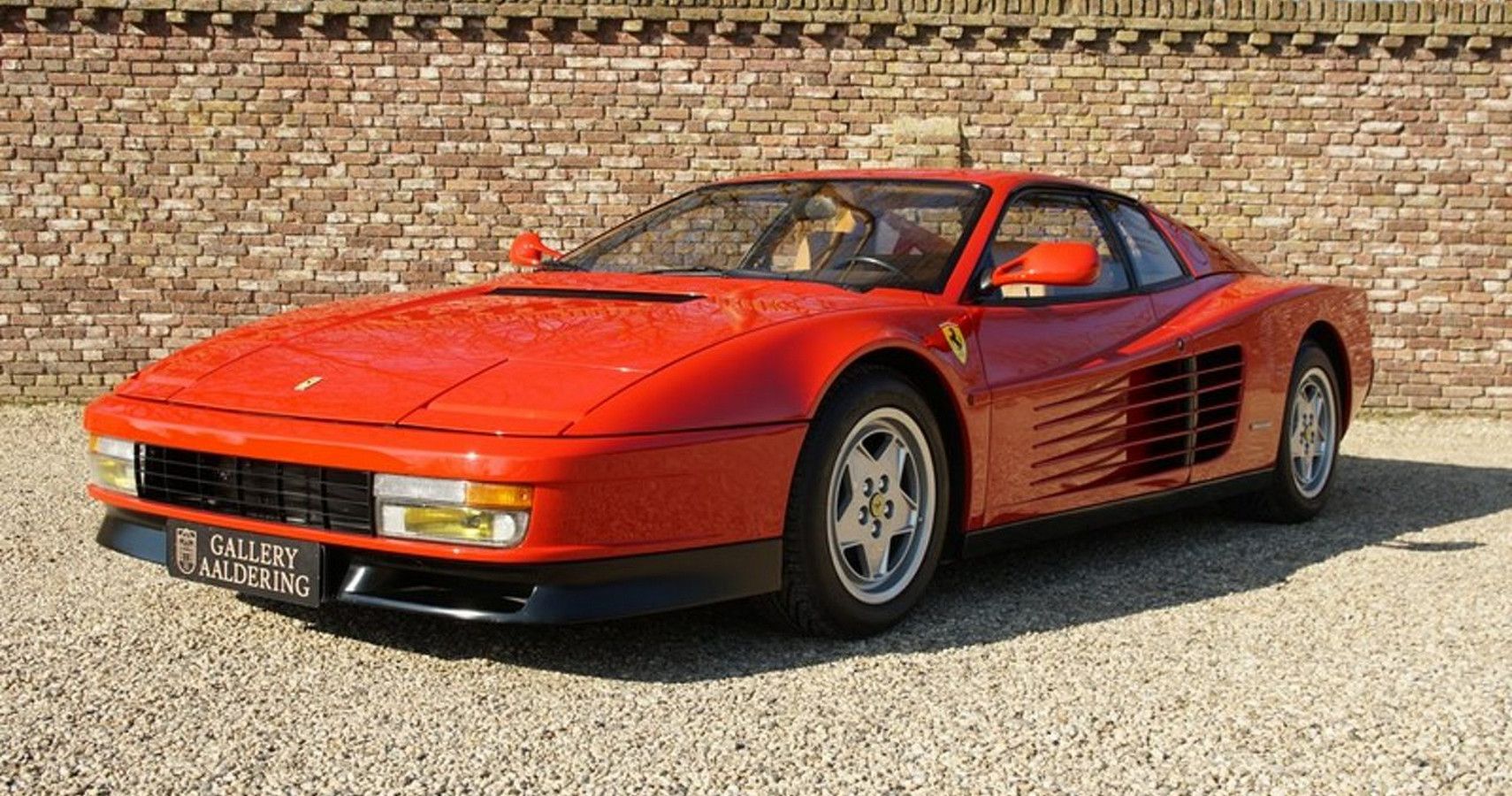European carmakers have produced some of the finest cars over the last 100 years, with the 1980s interest in motorsports influencing designers to produce ever-better cars. Iconic sports cars and supercars from Porsche, Ferrari and, Lamborghini kick-starting the race to produce the fastest cars, while other carmakers produce great practical everyday cars.
Not every person will agree on a great car, some cars are great to begin with, while others achieve greatness through their capabilities.
10 Ferrari F40 - No Compromise Supercar
Needing no introduction the F40 is the most famous of all Ferrari Road cars holding the title world's fastest production car until the arrival of the XJ220 in 1992. Ferrari produced a new carbon fiber and kevlar bodyshell to minimize weight, while the same 2.9-liter turbocharged engine from the 288 GTO provided the F40 with 471hp.
Early examples in a bid to keep weight to a bare minimum painted so thin the weave of the carbon fiber is visible. With its top speed of 201mph, the weight saving exercises paid off making the F40 the fastest production car in the world.
9 Audi Quattro - Rally Car Legend
Quattro changed rallying forever introducing the first successful application of 4-wheel drive to the sport that would subsequently make it to road car production. Unlike other carmakers in Group B Audi mass-produced the Quattro model completing 11,452 examples over its lifespan.
Unusual in car production, the Quattro featured a 5-cylinder turbocharged engine providing more power than a comparable 4-cylinder unit.
8 Porsche 928 GT- Luxury GT Cruiser
Unbelievably, the 928 was Porsche's intended replacement for the iconic 911 model, a plan later dropped in favor of marketing the 928 as a grand tourer instead. Departing from the sports car format of the 911, the 928 is a front-engined GT car with a 5.0-liter V8 engine in driving the rear wheels through a unique trans-axle design. High levels of performance and refinement made the 928 GT the perfect long-distance GT.
7 BMW M3 E30 - Ultimate Sports Coupe
Capable of challenging sports cars while providing the practicality of a sedan BMW's M3 launched in 1986 and would continue in various forms until the present day. In house performance tuners BMW M begins with the standard car, before comprehensively uprating engines, brakes, handling and, styling to create the ultimate driving machine.
In unrestricted cat-free tune, the M3's engine produces 197hp from its relatively small 2.0-liter size, allowing the M3 to reach an impressive top speed of 149mph
6 Porsche 959 - Technologically Superior Supercar
Porsche's 959 is the most technologically advanced car produced in the 1980s, borrowing the underpinnings from the 911 model range. Built for the Group B racing series, Porsche like other carmakers were required to produce a minimum of 200 examples for road use, although this figure totaled 337 units by the end of production in 1993.
Powered by a smaller 2.85-liter turbocharged engine with 444hp gave the 959 a maximum speed of 199mph competing closely with its rival the Ferrari F40.
5 Lamborghini Countach 25th Anniversary - Fastest Countach
Reverting to the cleaner lines of the original Countach, Lamborghini launched the 25th-anniversary model in 1988 producing a more aesthetically pleasing look. Previous models with their outrageous wings did little for performance, causing more drag than additional downforce.
Under the hood, the same 5.2-literV12 engine producing 449hp made the 25th Anniversary model the fastest Countach produced with a top speed of 183mph able to reach 60mph in 4.7 seconds.
4 Ford RS200 - Homologation Special
Produced in low numbers to meet FIA homologation rules, Ford's Rs200 was developed from their WRC rally program with 200 examples required for road use. Built around a mid-engine design with 4-wheel drive the RS200 had little in common with any Ford production car only using a handful of parts adapted for use.
The road going versions received the 1.8-liter engine producing 250hp while rally versions had larger 2.1-liter engines with up to 450hp available.
3 Aston Martin Virage - Brutal British GT Car
Undeniably different from other GT cars produced in the 1980s, Aston Martin's Virage model uses brute power to overcome its weight and size. Designed as a two-door four-seat coupe the Virage despite its 3950lb weight could still compete with sports cars reaching 62mph in 6.5 seconds and topping out at 158mph.
Performance for the Virage coming from its powerful 5.3-liter V8 engine producing 300hp, with later models receiving a power increase to 350hp.
2 Porsche 911/964 - Evolution Of The Icon
Internally code-named 964, the 1989 revision of the iconic Porsche 911 another evolutionary change to the companies best-selling model. Launching in 1989 offering for the first time Porsche's Tiptronic automatic transmission and permanent all-wheel drive made the 964 spec model the finest 911 model to date.
Equipped with the now-familiar flat-six air-cooled engine produced 247hp endowed the 964 with a top speed of 159mph.
1 Ferrari Testarossa - Flawed Italian Masterpiece
Arguably one of the most recognizable cars from the '80s and '90s Ferrari's Testarossa although fast was too big to compete with the F40 and Porsche 959. Appearances on US TV show Miami Vice would be a success from a marketing perspective helping to sell 10,000 cars in its lifespan.
Ferrari's mid-engine layout with the Tipo 3.9-liter flat-12 engine providing 390hp driving the rear wheels capable of reaching 62mph in 5.8 seconds. Performance figures aside, the Testarossa's weight of 3766lbs and size bing 12 inches wider at the rear would be the weaknesses.

